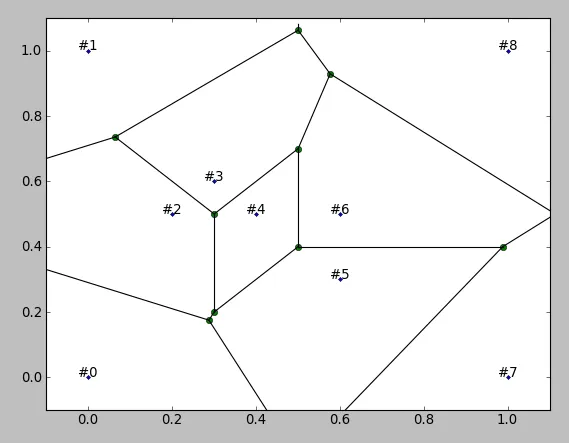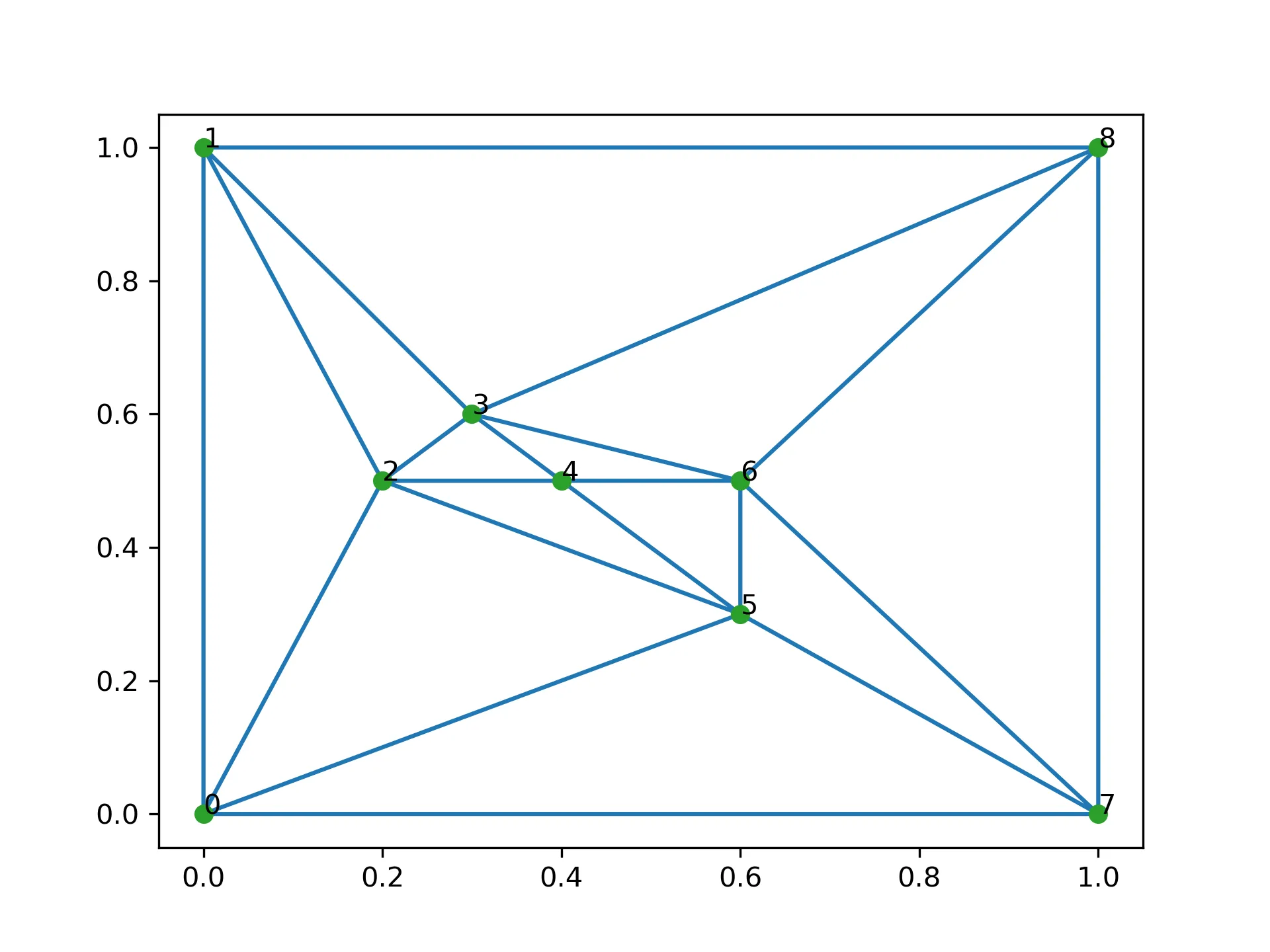虽然这个问题很老,但我正在寻找同样的答案,并认为该答案可能仍对某些人有帮助。可以使用scipy模块中的Delaunay。
from scipy.spatial import Delaunay
from collections import defaultdict
import itertools
points=[[0.0, 0.0], [0.0, 1.0], [0.2, 0.5], [0.3, 0.6], [0.4, 0.5], [0.6, 0.3], [0.6, 0.5], [1.0, 0.0], [1.0, 1.0]]
tri = Delaunay(points)
neiList=defaultdict(set)
for p in tri.vertices:
for i,j in itertools.combinations(p,2):
neiList[i].add(j)
neiList[j].add(i)
for key in sorted(neiList.iterkeys()):
print("%d:%s" % (key,','.join([str(i) for i in neiList[key]])))
0:1,2,5,7
1:0,8,2,3
2:0,1,3,4,5
3:8,1,2,4,6
4:2,3,5,6
5:0,2,4,6,7
6:8,3,4,5,7
7:8,0,5,6
8:1,3,6,7
from scipy.spatial import Voronoi, voronoi_plot_2d
import matplotlib.pyplot as plt
vor = Voronoi(points)
voronoi_plot_2d(vor)
for i,p in enumerate(x):
plt.text(p[0], p[1], '#%d' % i, ha='center')
plt.show()



defaultdict?它与常规的{}有什么不同? - Nathan majicvr.com